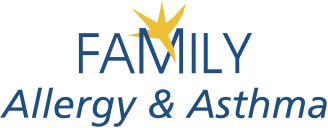Cold, Flu or Allergies?
The symptoms of a cold, the flu, and allergies are very similar, making it hard for many to tell the difference. The chart below can help guide you to know the difference between these conditions. Learn more about the difference between coronavirus and allergies here.
| Symptoms | Cold | Flu | Allergy |
|---|---|---|---|
| FEVER | Rare | High (102-104°F) last 3-4 days | Absent |
| HEADACHE | Rare | Prominent | Common |
| ACHES, PAINS | Slight | Usual; often severe | Never |
| FATIGUE, WEAKNESS | Quite Mild | Can last up to 2-3 weeks | Common |
| EXTREME EXHAUSTION | Never | Early and prominent | Unusual |
| STUFFY NOSE | Common | Sometimes | Common |
| SNEEZING | Usual | Sometimes | Common |
| SORE THROAT | Common | Sometimes | Sometimes |
| CHEST DISCOMFORT, COUGH | Mild to Moderate, hacking cough | Common, can become severe | Sometimes |
| COMPLICATIONS | Sinus congestion or earache | Bronchitis, pneumonia; can be life-threatening | Asthma, ear infection, sinusitis, bronchitis, nasal polyps |
| PREVENTION | None | Annual vaccination; antiviral drugs | Controlling environment |
| TREATMENT | Only temporary relief of symptoms | Antiviral drugs 24-48 hours after onset of symptoms | Controlling environment, medication, allergy injections |
| OCCURRENCE | 3-4 times yearly | Once yearly | Seasonally/ Repeatedly |
Do you have a Cold, the Flu, or Allergies?
The above table details the symptom differences between all three conditions.
The common symptoms of a cold, flu and allergies are a stuffy or a runny nose, sneezing, a sore throat, a cough, a headache, or even fatigue. Two differing symptoms are a fever or aches/pain, these would not be caused by allergies, but could be due to a cold or the flu. Symptoms of the flu are often more severe than a cold.
While the symptoms are similar, the origin of the conditions are different. A cold and the flu are both caused by different viruses, whereas allergies are caused by your immune system reacting to a trigger. Common inhalant allergy triggers are pollen, dust, mold, pet dander.
See related: Is it a cold? Or is it Allergies?
Occurrence:
Another key difference is when and how often patients have these conditions. A cold can be caught 3 or 4 times a year, where as patients are likely only to get the flu once. Allergies are a whole different story, allergies reccur seasonally and repeatedly.
Since external triggers cause allergies, what you are allergic to determines when you begin to feel these symptoms. Those who are allergic to grass and trees are more likely to suffer in the spring, whereas ragweed pollen affects allergy sufferers in the fall. Those who have indoor triggers, like dust, mold, or pet dander, may experience symptoms year round when they are in contact with the allergy trigger.
Prevention:
No one likes getting sick, for common cold prevention patients should practice good handwashing habits, avoid people who have a cold and avoid spreading germs. The CDC recommends everyone over 6 months of age get the influenza vaccine. Allergy symptoms can be prevented by controlling your environment and avoiding triggers when possible.
Treatment:
If you have a cold, we recommend rest, drink lots of fluids, and treat your symptoms until they subside. If you have the flu, you can receive an antiviral drug 24-48 hours after you’ve begun experiencing symptoms. Allergies are treated with avoidance methods, medication to control the symptoms, and allergy shots to treat the cause.
Understanding the differences between these conditions can help you get the treatment you need quickly. If your symptoms return at the same time every year, you may have allergies. We recommend getting an allergy test to identify what allergies you may have.
Talk to your doctor, or schedule an appointment with one of our board-certified allergists today.
